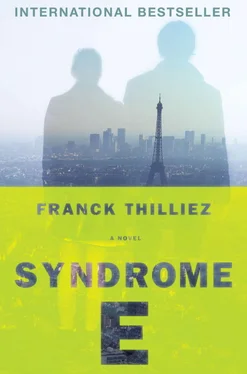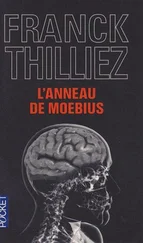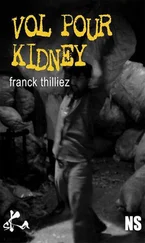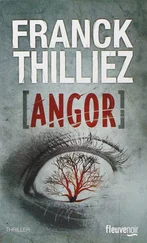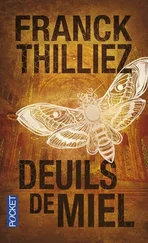“Good lord, everyone seems to know about these mass adoptions except us. And what about her friend, Lydia Hocquart?”
“She died in 1985 in a mental hospital, from a heart attack. She suffered from severe behavioral disorders and her heart just couldn’t take the meds she’d been swallowing all those years.”
“Ask them to send you all the info, and e-mail it to me. What was the name of Lydia’s hospital?”
“Hold on… here it is. Saint Julien Hospital in Saint-Ferdinand d’Halifax.”
“And how long was she there?”
“That, I have no idea. It’s all confidential medical information. You do realize that I’m normally the one who asks the questions?”
Behind Lucie, the door opened. Patricia Richaud silently inspected the environs, making sure everything was in its proper place.
“I’ll call you back,” said Lucie.
She hung up, jaws clenched. Severe behavioral disorders… mental hospital…
The archivist’s throaty voice pulled her from her thoughts.
“Did you find everything you wanted?”
Lucie jumped.
“Uh… yes, yes. I did. I found the name I was looking for, and her last known home, La Charité Hospital in Montreal.”
“The order of the Gray Sisters…”
“I’m sorry?”
“I was just saying that that establishment houses a Roman Catholic religious congregation, whom they still call the Gray Sisters. Their hospital was bought by the University of Montreal—the papers have been full of it these past weeks. By 2011, the sisters will be relocated to Saint Bernard Island, but for now most of them are still living in Ward B of the hospital, refusing to leave the premises. Their archives have already been transported here, which is why you were able to find what you were looking for.”
The Gray Sisters … Just the name gave Lucie gooseflesh. She imagined stony faces, eyes like dull mercury.
“Would it be possible to get the list of the sisters who are still living there?”
Lucie was thinking of Sister Marie du Calvaire. Richaud knit her brow.
“That should be feasible, yes.”
“And can you also tell me what this dark period of your country is about? I’d like to know what happened, exactly.”
The employee remained frozen for a few seconds. She set down a heavy ring of keys on the table and swept her gaze over the piles of papers.
“It all has to do with those thousands of children, miss. An entire generation of little ones sacrificed and tortured. The only trace of it is what remains here, in this room. They called them the Duplessis Orphans.”
She headed for the door.
“I’ll be back with your list.”
One o’clock in the morning, French time. Earlier that evening, Sharko had received in his in-box the list of attendees at the SIGN conference in 1994.
The inspector had printed out the document and gone back to his kitchen table, discreetly lit by a small lamp. From the outside, it had to look like he was asleep.
According to the information supplied by the ministry of health, the conference had lasted from March 7 to 14. The select participants had arrived and returned on an airplane specially chartered by the Egyptian government. It wasn’t exactly the VIP tour, but it wasn’t far off.
By a disturbing coincidence, the murders had all taken place between March 10 and 12, in the midst of the conference. According to the profile drawn up early in the investigation, one of the killers had a knowledge of medicine. The use of ketamine, the slicing of the skulls, the enucleation… The problem with this list was that the 217 French men and women in Egypt at that moment—not counting those from the humanitarian aid organizations, a whole other story—all had some notion of medicine, and the term “notion” was putting it mildly. Neurosurgeons, professors of psychiatry, medical students, researchers and department heads, biologists, most of whom had lived at the time in Paris or its environs. The cream of the French research community, individuals who seemed above reproach.
Two hundred seventeen lives—one hundred sixteen men and one hundred and one women—that he had to dissect in detail, on the basis of fifteen-year-old suppositions.
From the moment he held the sheets in his hand, Sharko felt increasingly certain that one of these individuals, aware of the phenomenon of mass hysteria that had afflicted Egypt in 1993, had made the trip a year later, using the conference as a pretext, with the sole aim of slaughtering three innocent girls in order to steal their brains and eyes.
The name of the killer or killers must have been hiding in these papers.
The questions that tormented him, the late hour, Eugenie’s constant visits, and the palpable tension in the apartment prevented him from really concentrating on the list. His head was full of shadows.
Sharko sighed. He finished his mint tea, staring into space. The military, medicine, filmmaking, this business about Syndrome E… The cop knew he was involved in a case that went far beyond the standard manhunt. Something monstrous, the likes of which he’d never seen. And yet he’d confronted his share of monstrosities, more than he could count on both hands.
In the dead of night, his keen senses suddenly focused on the entry door.
An infinitesimal sound of metal pierced the silence in the hallway.
Immediately, Sharko turned off the light and grabbed up his Sig.
Here they were.
Beneath his door, he saw, very briefly, the beam of a flashlight, before everything went black again.
His jaw set, he slowly got up from his chair and crept toward the living room.
On the other side, the linoleum floor creaked slightly. Sharko felt the edge of his sofa and crouched down, his gun aimed blindly in front of him. He could have attacked from the front, by surprise, but he didn’t know how many there were. One thing was for sure: they rarely went out alone.
The creaking in the hall stopped. The cop’s palms were moist on the grip of his gun. He suddenly thought of the photos of the film restorer’s body: hanging from the ceiling, disemboweled and stuffed with film. Not an enviable fate.
The door handle turned, very slowly, before returning to its initial position. In the following seconds, Sharko expected them to go for the lock, then burst in armed with knives or silencers.
Time stretched out forever.
Suddenly he heard a rustle under the door.
The creaking started up again, then decreased in a regular rhythm.
Sharko rushed to the door and gave the dead bolt a precise twist. The next second, he was in the hallway, barrel pointed forward. With his fist, he banged on the light switch and flew into the stairwell. Downstairs, the main door slammed shut. Sharko took the stairs two at a time, almost unable to breathe. The foyer, then the street. A long line of pallid streetlamps ran down the asphalt. Left, right—not a soul. Just the murmur of a slight breeze and the slow breath of night.
Behind him, the building’s entry door flapped shut but didn’t close completely. Sharko noted a small square of cardboard taped to the plate, preventing the bolt from going in. Whoever it was must have put it there earlier in the evening after a resident had gone through, and could therefore come back at any time without having to buzz in. Basic, but smart.
The detective ran back upstairs to his apartment. He switched on the lights, turned the locks, and, with his foot, pushed the white envelope that had been slid under the door into his living room. He did not pick it up until he’d put on a pair of latex gloves, which he kept in boxes of one hundred under the sink—can’t be too careful.
The envelope looked elegant, lightweight, the kind used for correspondence. With a tightness in his throat, Sharko looked it over completely, then opened it with a knife blade.
Читать дальше
